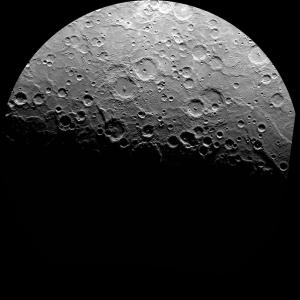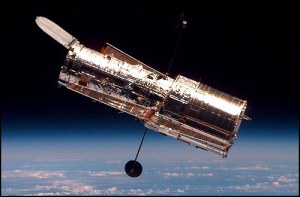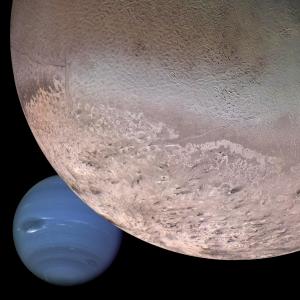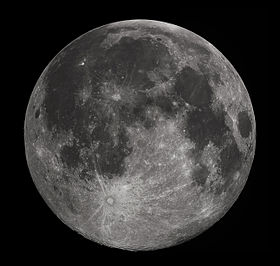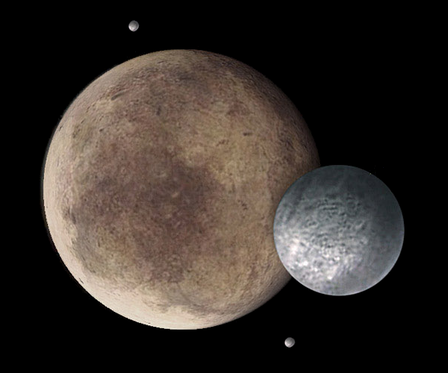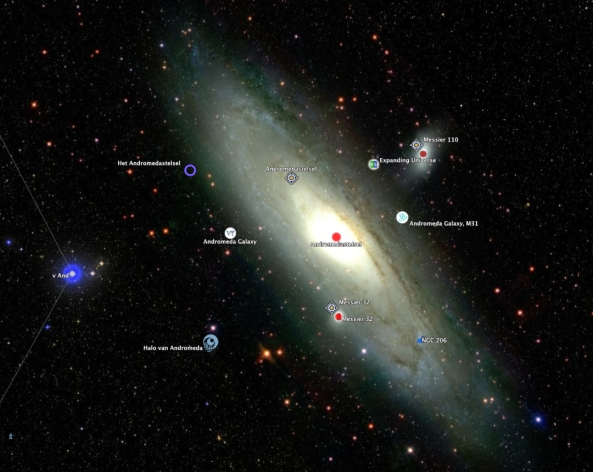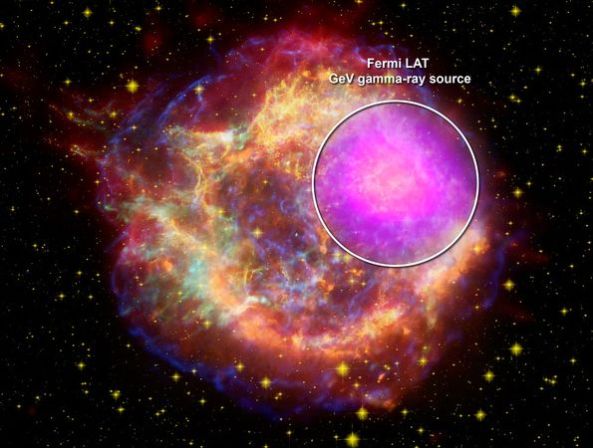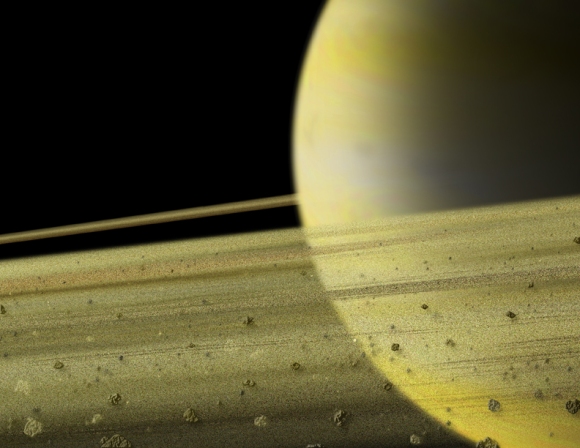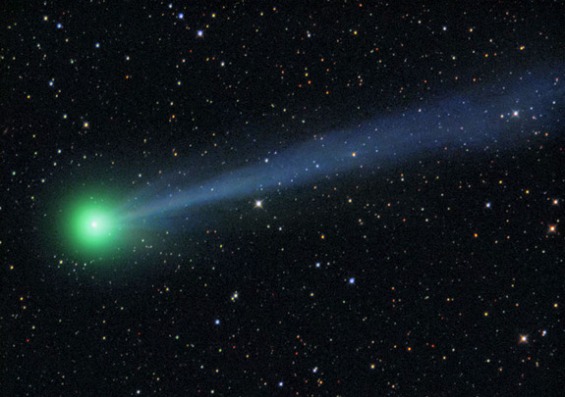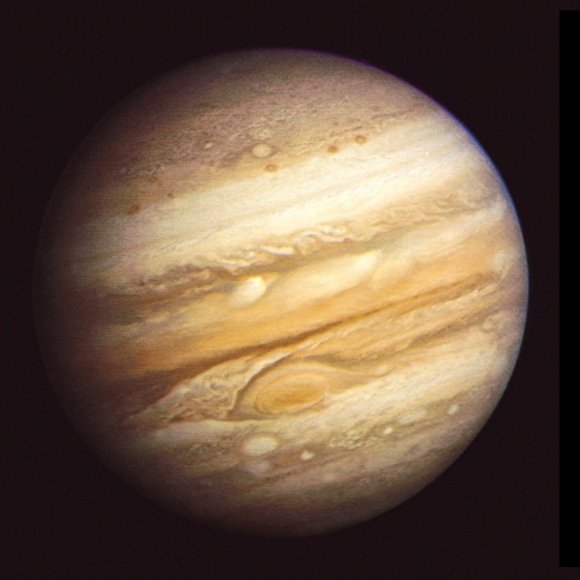Mercury is the second smallest planet in our solar system. It also is the closest planet to the sun. To give an image of what it somewhat looks like is that its image is similar to the Earth’s Moon. The surface of Mercury is bombarded with crater marks. Its physical composition is made up of about 70% metallic materiel and 30% silicate materiel. Mercury has the second highest density of any planet in the solar system and has the highest iron content in its core than any other planet. 42% of its total mass is in its iron rich core.
The Hubble Space Telescope
The Hubble space telescope, named after the astronomer Edwin Hubble, is the most famous telescope and is a very important idol in space exploration. It was first used on a mission into space in 1990. With the distortion of Earth’s atmosphere, Hubble is able to take very sharp precise images in space with almost no background light. Hubble has provided some of the most lighted detailed pictures every recorded. The project and blue prints to design Hubble were brought up in the 1970’s. Its original launch date was 1983 but due to technical errors made on the telescope it was rest to 1990.
Triton
Triton is the largest moon of Neptune. Discovered in 1846 by William Lassell, Triton is a very mysterious planet to us and has many interesting qualities about it. Triton is the coldest known object in the solar system. It has a surface temperature of -391 F. Its surface is covered in thick layers of frozen nitrogen and ice around the planet and beneath that frozen rock. Its atmosphere is composed of nitrogen and small hints of carbon monoxide. Besides being the coldest object in our Solar system, it also has a backward rotational cycle around its home planet of Neptune.
Earth’s Moon
The Moon is referred to as the only natural satellite of the Earth. It is a barren wasteland filled with crater holes. With no core or atmosphere, it rotates around the Earth. There are many theories about how the moon was formed. It is thought to have formed 4.5 billion years ago not much after the Earth is thought to have been made. In this theory which is the most widely accepted theory of the Moon’s origins is that shortly after the Earth’s creation, a object around the size of Mars, crashed into the top side of the Earth ripping apart a huge chunk of the Earth. The debris that was ripped off then started to stick together forming it’s own sphere near the Earth. This theory is thought to be right because the Moon’s composition is mainly of that the upper layers of the Earth are made of.
Pluto the dwarf planet and its orbital period
Pluto is the smallest planet in our solar system. So small that it is considered a dwarf planet. For a long time Pluto was considered the 9th planet to our solar system. But discoveries in the late 1970s questioned this. A minor planet called 2060 Chiron was very similar to Pluto. Its low mass was very much similar to that of Pluto’s and this is when the questioning began. Pluto’s orbital period is 89,865.65 days or 246.04 years. In relation to earth, that would be like having the Earth rotate around the solar system 246 times which would be 246 Earth years for it to equal one Pluto year.
The Andromeda Galaxy
The Andromeda Galaxy is the closest Galaxy to the Milky Way. Although when you hear that it is approximately 2.5 million light years away, that doesn’t seem so close. It can be seen with high tech optical telescopes in the Andromeda Constellation. This galaxy was thought to be a many of things at first. Once scientist thought it was the result of star going super nova and many other’s though it was a nebula within our own galaxy. It wasn’t until later when Isaac Roberts took a photograph of it from his observatory that we humans discovered that it had characteristics of a galaxy such as a spiral structure.
Gamma Rays in space
Gamma rays have the highest frequency of any kind of energy source in the electromagnetic spectrum that we know of. Gamma rays are the brightest, and have the highest form of light and come fro mthe hottest places in the galaxy. Gamma rays can be produced from radioactive atoms and from Nuclear explossions. These rays are extremeley hard to see and we didnt even discover them, or see them, until the late 20th century in 1961. The first teloscope able ot see gamma rays was brought up on the Explorer XI. The teloscope tracked over 100 cosmic gamma ray photons.
The rings of Saturn
Saturn’s rings are the largest and most dense of any planetary rings in the solar system. Althought they are so large, they are not visible from Earth without the aid of technology. Within Saturn’s rings, there is actually a few gaps where ring materiel falls through. Sauturn was first descovered by Galileo Gali when he peered into the night sky with his telescope. When he looked he thought that Saturn did not have rings but instead ears because at this time in 1610, Sauturn’s rings were directed right at Earth allowing only the point of one ring to be seen. Saturn has different ranking rings letteres A though G which is labled by how dense each layer is and by composition. Saturns rings are mainly made up of debris such as ice, and rock.
Comets
Comets are extremeley rare. They are not everyday occurances like astroids are. In fact, the likliness of seeing a comet pass my earth is one in a million. This is why people make wishes when they see one because of this. Althought to many people they are not good and are considered bad. Since anceitn times comets have been considered bad omens by many people across the world. Comets are usually composed of ice, dust, and different types of rock particles. To distinguish between Asteroids and comets, comets have a {coma} which is a layer of light wrapped atround it that gives it the glow unlike asteroids who do not have a coma.
Jupiter
Jupiter is the largest planet in our solar system. It is considered a gas giant and one one thousandth of the sun but 2 and a half times the mass of all of the other planets in our solar system combined.Jupiter’s composition is mainly composed of Hydrogen and helium. But there have been traces of methane, nitrogen, hydrogen sulfide, and carbon. Although Jupier is the biggest planet, since it is a gas planet, its density is lower than that of any of the four solid planets. Jupiter’s red storm spot has been goin on ever since it was discovered by Gaileo in the 1600s and possibley longer.
